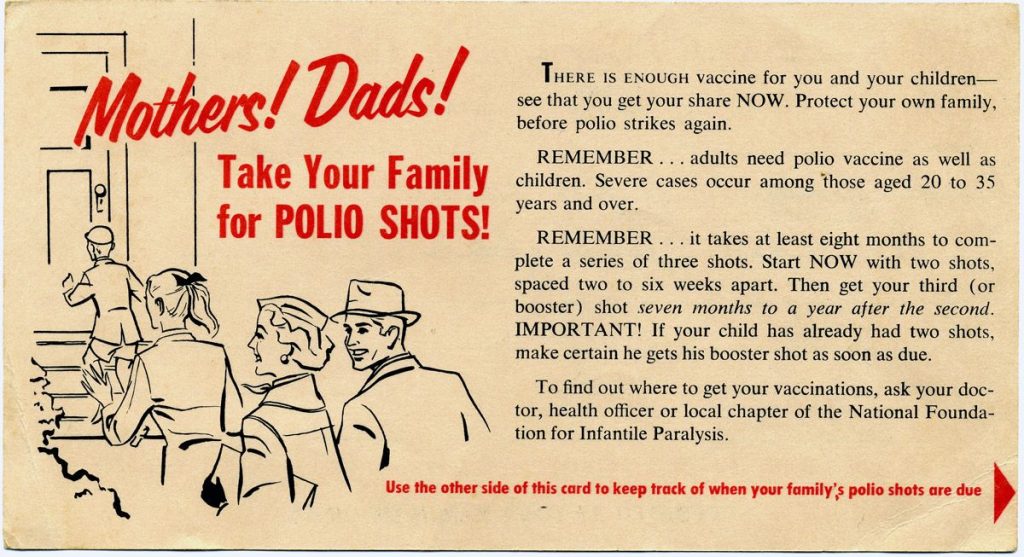Vaccine history repeating itself.
The roll-out of a vaccine to eradicate polio shares similarities with today’s efforts to vaccinate the global population against COVID-19.
However, one big difference is that in 1937, during the first outbreak, there was no global rush to develop a vaccine, as we’ve experienced this past year.
Then, herd immunity was relied on for protection.

In 1937, a vaccine was still another 18 years away.
In Australia, the first polio vaccine (the Salk vaccine) became available in 1955 and by June of the same year, 25 million doses were manufactured at the Commonwealth Serum Laboratories in the Melbourne suburb of Parkville.
Community uptake of the vaccine varied – in NSW 83 per cent of children were vaccinated, but only 72 per cent of children in Victoria.
Less than ideal vaccination rates and a lack of herd immunity contributed to another outbreak of polio in Australia in 1961/62. By 1966 a new, oral (Sabin) vaccine became widely available.
However, it took until October 2000 for the World Health Organization to declare the Western Pacific region, which includes Australia, to be polio-free.
There are an estimated 400,000 polio survivors in Australia, many of whom still live with the long-term effects of the disease.
Do you have a polio story to share? Email danielleblewett@stgiles.org.au
